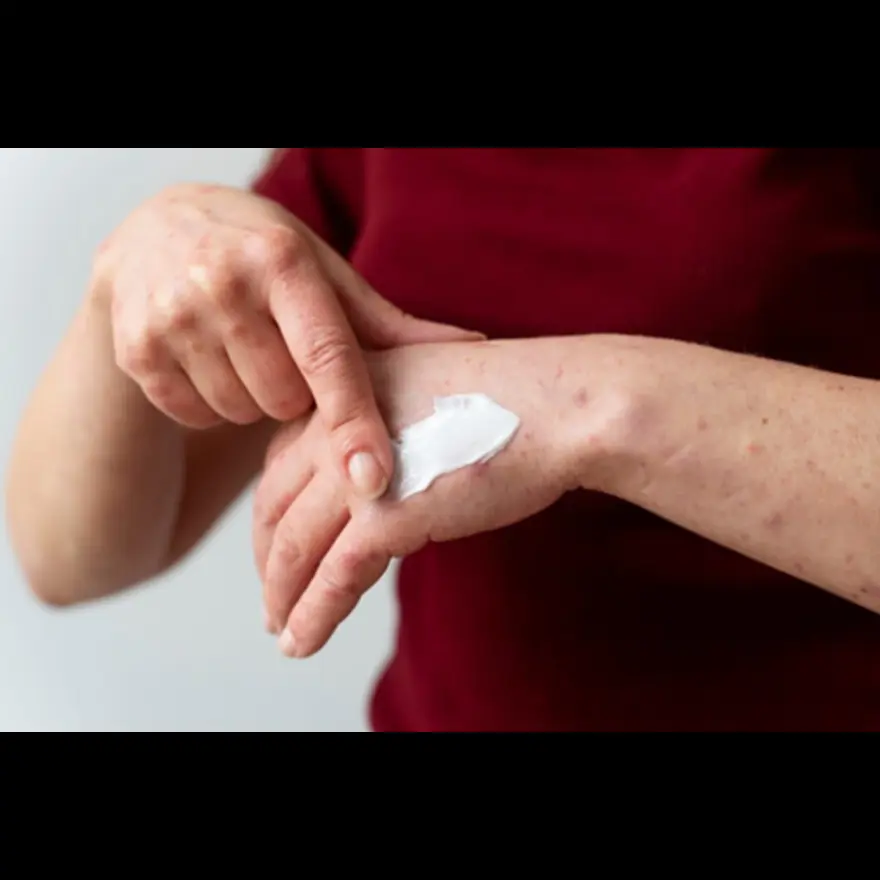Osteoporosis Profile II Test
50+ booked in last 3 daysOsteoporosis Profile Test Overview
Osteoporosis is a bone condition that causes reduced bone mass leading to frequent bone and joint pains, brittle bones and increased risk of fractures. Various factors apart from age, sex, and racial predisposition increase the risk of osteoporosis. The condition often goes undiagnosed till the occurrence of an injury, fracture or deformity. Hence, it is recommended to get an Osteoporosis Profile test to measure the various parameters in blood and urine that may increase the risk of osteoporosis in an individual. Even post diagnosis, these parameters are useful to assess the status of the disease.
Osteoporosis is a disorder of the bones that results in less bone mass, brittle bones, and an increased likelihood of fractures. Besides age, sex, and ethnic predisposition, other factors also increase the probability of osteoporosis. Long-term use of some medicines, bad habits including smoking and drinking, hormonal imbalances, and menopausal problems, may lead to bone loss.
What is the Osteoporosis Profile II test?
The osteoporosis profile-II test examines the numerous blood and urine parameters that could raise a person's risk of developing osteoporosis. These factors can be used to evaluate the disease's status even after a diagnosis. The test measures the levels of:
- calcium
- alkaline phosphatase
- parathyroid hormone (PTH)
- deoxypyridinoline (DPD)
- vitamin D
- phosphorus
- 25OH vitamin D2
- osteocalcin
- E2 levels in blood serum
It measures DPD levels, a biochemical marker of bone loss in a urine sample. This quick, non-invasive test aids in the early detection of osteoporosis. It also serves as a means of monitoring the effectiveness of hormone replacement therapy or mineral supplementation in treating the condition.
Written by: Dr.Shibani R, Medical Writer, Medical Affairs
Osteoporosis Profile II Test Price
Metropolis Healthcare is a leading diagnostics centre and pathology lab in India equipped with the latest state-of-the-art technologies that provides the Osteoporosis Profile II Test with a clear pricing structure.
The Osteoporosis Profile II Test Price in Mumbai is ₹ 6,085 .
We are committed to deliver accurate and quality results from the best labs in India with complete transparency regarding test cost and turnaround time. No matter where you are, we strive to offer patients high-quality service that is affordable and accessible.
Frequently Asked Questions
It is a profile test that measures certain parameters in blood and urine that may aid the diagnosis of osteoporosis. The common symptoms are frequent non-specific backache, brittle bones leading to frequent falls and fractures, loss of height over time, bending of the spine (kyphosis). The test may also be recommended in certain individuals with risk factors for developing osteoporosis or already diagnosed as osteoporosis. These include:
- Post menopausal and early menopausal women
- Long term corticosteroid usage leading to reduced bone density over time.
- Positive family history.
- Hormonal disorders of the thyroid or parathyroid glands.
It is a more comprehensive test that includes more parameters which may be done in patients already diagnosed as osteoporosis.
It is a profiling test that evaluates the above-mentioned blood and urine parameters that may help with
- Diagnosing osteoporosis
- Tracking the progression of osteoporosis
- Monitoring treatment outcome
The osteoporosis profile-II test is a comprehensive profiling test that measures specific blood and urine parameters to diagnose the onset of osteoporosis. It is also used to track the progression of the disease and monitor the success of treatment in individuals suffering from the condition.
Osteoporosis profile test measures the levels of calcium, phosphorus and alkaline phosphatase in blood serum, DPD and P1Np levels in urine sample. Beta 2 Crosslaps is also measured.
The test examines the amounts of DPD in a urine sample, as well as the concentrations of DPD, PTH, calcium, phosphorus, vitamin D, 25 OH vitamin D2, alkaline phosphatase, osteocalcin, and E2 in the serum.
During osteoporosis profile test blood sample is taken from a vein in your arm, using a small needle. After the needle is inserted, a small amount of blood will be collected into a test tube or vial. You may feel a little sting when the needle goes in or out. This usually takes less than five minutes. Early morning first or second void urine sample is recommended for measuring the DPD levels.
Low calcium levels may lead to dry skin, coarse hair, brittle nails, muscle cramps, tingling, and cardiac irregularities. Low calcium levels (hypocalcemia) may occur due to hypoparathyroidism, kidney conditions, malnutrition. pancreatitis, low calcium diet and vitamin D deficiency.
High calcium levels may lead to constipation, abdominal pain, nausea, vomiting, and mental confusion. High calcium levels (hypercalcemia) may indicate hyperparathyroidism (overactive parathyroid gland), certain cancers, bone disorders like Paget's disease or high vitamin D levels.
High phosphorus levels maybe due to kidney disorders, diabetic ketoacidosis, liver diseases, hypoparathyroidism, hypocalcemia, excess phosphorus in the diet and even due to certain medications.
Low phosphorus levels may occur due to hyperparathyroidism, hypercalcemia, lack of phosphorus in the diet, alcoholism and malnutrition.
High levels of ALP are seen in:
Children during active bone formation, pregnant women, those with hepatobiliary disease like bile duct obstruction, hyperparathyroidism, chronic kidney disease, vitamin D deficiency, rickets, osteomalacia, bacterial infection and malignant tumour.
High DPD levels in urine indicate the risk of osteoporosis due to poor bone re-absorption status.
This is most commonly seen in post menopausal women with low estrogen levels.
High P1NP levels are seen in patients with osteoporosis and Paget's disease. Post beginning the HRT , if the levels are found to reduce it may show treatment effectiveness.
This comprehensive profile measures several parameters that are associated with osteoporosis. However, each parameter may be associated with several underlying conditions. Your doctor will assess your results and then provide a diagnosis of your condition. Below, you will find a list of crucial parameters and the underlying conditions that can lead to their abnormal levels.
Low calcium levels (hypocalcemia) can be brought on by kidney disease, starvation, hypoparathyroidism, vitamin D insufficiency, low calcium diet, and pancreatitis. Hypercalcemia, or high amounts of calcium, may be a sign of hyperparathyroidism (an overactive parathyroid gland), some malignancies, bone abnormalities such as Paget's disease, or excessive vitamin D levels.
High levels of phosphorus can be caused by phosphorus overload in the diet, excess phosphorus in the urine, diabetic ketoacidosis, liver illness, hypoparathyroidism, hypocalcemia, and even by some drugs. Low phosphorus levels can be brought on by malnutrition, hyperparathyroidism, hypercalcemia, a phosphorus-deficient diet, and drunkenness.
Higher than normal levels of ALP are naturally found in women and growing children. High levels of ALP are seen in osteoporosis and Paget's disease. ALP total and bone fraction ostase in serum is measured to evaluate the prognosis of the disease. High ALP levels may also be due to vitamin D deficiency, osteomalacia, rickets, chronic kidney disease, hepatobiliary diseases, hypothyroidism, bacterial infection, and malignant tumour.
High levels of DPD in urine occur due to poor bone re-absorption and indicate the risk of osteoporosis.
Low levels of Vitamin D and 25 OH Vitamin D2 are linked to bone weakness, osteoporosis, and increased chance of fractures.
High PTH levels frequently occur due to vitamin D deficiency, It may indicate parathyroid disorders or bone disorders. Certain lymphomas or chronic kidney disease (CKD) can also lead to abnormal PTH levels.
High osteocalcin levels indicate osteoporosis, Paget's disease, or hormonal disorders of the thyroid or parathyroid gland. Low osteocalcin levels may be due to multiple myelomas or liver disorders.
Low E2 levels suggest osteoporosis that may occur owing to low estrogen levels leading to poor bone formation and re-absorption.
Doctors advise post-menopausal women above 65 years of age and women at risk of developing osteoporosis to undergo the test. Further, individuals presenting symptoms of osteoporosis, such as low bone density, improper posture, weight and height loss, and brittle bones are recommended to go for the test.
Osteoporosis is typically diagnosed by doctors during normal disease screening. Doctors suggest testing for:
- Post-menopausal women above 65 years of age.
- Women, who are predisposed to developing osteoporosis due to risk factors regardless of age.
- Individuals suffering from frequent backaches, height reduction, or bending of the spine.
- Individuals with brittle bones, who are prone to falls and fractures.
- Patients diagnosed with osteoporosis and undergoing hormone replacement treatment.
When you see your doctor, do not forget to report:
- Any fractures in the past.
- Your dietary and exercise routines, history of alcohol usage, and smoking habits.
- Medication interactions and past or present medical disorders, which may be linked to low bone density and an increased risk of fracture.
People with osteoporosis may undergo frequent monitoring tests to check on how fragile their bones are and whether their treatment is lowering their fracture risk. The reason and degree of bone weakening can influence how frequently this testing is performed
There is no need for any preparation for this test. However, be careful to let your doctor know if you've had a CT scan, nuclear medicine test, or barium test, or if you've received an injection of contrast material.
The doctor could also prescribe a test that assesses your bone mineral density (BMD) in a particular bone region, typically your spine and hip. BMD testing is used to:
- Identify inadequate bone density.
- Analyze osteoporosis.
- Aid in predicting your future fracture risk.
- Keep an eye on the success of osteoporosis treatment.
Bone disorders Profiles
Calcium (Ca) Test
Phosphorus (P) Test
Alkaline Phosphatase-Total (ALP)
Alkaline Phosphatase-Bone Fraction
Deoxypyridinoline (DPD)
Osteocalcin
25-hydroxy vitamin D (25-OH Vitamin D)
Parathyroid Hormone (PTH)
Estradiol (E2) Test
Ratings & Reviews (0)
Why Metropolis?
Metropolis has a team of 200 senior pathologists and over 2000 technicians delivering diagnostic solutions in the areas of routine, semi specialty and super specialty domains like Oncology, Neurology, Gynaecology, Nephrology and many more.
We offer a comprehensive range of 4000+ clinical laboratory tests and profiles, which are used for prediction, early detection, diagnostic screening, confirmation and/or monitoring of the disease.





















 WhatsApp
WhatsApp